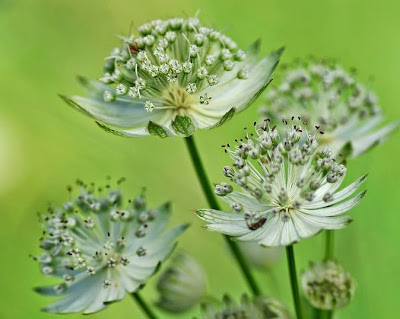Type of Flower
Astrantia:
Astrantia is a genus of herbaceous plants in the family Apiaceae, endemic to Central, Eastern and Southern Europe and the Caucasus.The Genus name comes from the Greek word for star in reference to the star-like quality of the flower heads. There are 8 or 9 species, which have aromatic roots, palmate leaves, and decorative flowers. They are commonly known as great masterwort, which may be confused with masterwort, Peucedanum ostruthium.
Astrantia has historically flourished through widespread growth in Central, Eastern and Southern Europe and the Caucasus.
Growing rapidly to be about one or two feet tall in just one season, Astrantia comes in a variety of colours, ranging from green through to cream, pink and deep reddish-purple. Astrantia’s tiny, delicate, star-shaped flower heads are held on fine stems radiating from a central point with a ruff of bracts protecting them and their seeds.
This shade-loving perennial will bloom about three months after a spring planting, or six to nine months after an autumn planting, if grown in partial shade and with adequate moisture. Astrantia is relatively pest-free, so once its basic shade and moisture needs are taken care of, it can practically be left to its own devices.
Many strains of Astrantia have been selected for their value in the garden, where they grow well if given reasonable soil, some shade and moisture. Their unusual pincushion flowerheads provide summer colour in shades of red, pink and white. A. maxima 'Largest masterwort' has gained the Royal Horticultural Society's Award of Garden Merit.
Originating in the moist woodlands of Europe and Asia, Astrantia is at its happiest when in damp, heavy, regularly fertilized soil and dappled shade, jostling for space with other plants. When planting in sunnier sites it’s important to incorporate more humus into the soil. Ensure plentiful water supply in dry conditions, especially if the plants are young.
References:
http://en.wikipedia.org/wiki/Astrantia
http://www.flowers.org.uk/flowers/flowers-names/a-d/astrantia/




















No comments:
Post a Comment